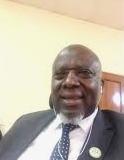Scholarly Conceptions of the Nature of Academic Research in Universities: A Literature Review
DOI:
https://doi.org/10.53449/ije.v1i2.60Keywords:
academic research, basic research, applied researchAbstract
Conceptions of the nature of academic research in universities are blurred. Although higher education scholars concede that academic research within universities has been conceptualised in terms of basic and applied research, the conceptual debate with regard to what constitutes each type of research still lingers on. The purpose of this literature review is to highlight these conceptions by shedding light on how the nature of basic and applied research is understood in the extant literature.
Downloads
References
Albert, M. (2003). University and the market economy: The Differential Impact on knowledge production in Sociology and Economics. Higher Education, 45(2), 147-187. Retrieved from: http://www.Jstor.org/stable/3447527.
Aluni, J., & Liam, C. (2014). Furthering the research impact of UCD: Report of the beyond publications committee. University College Dublin. http://hdl.handle.net/10197/729
ARC (2012). Excellence in research for Australia 2012. National Report. Commonwealth of Australia National Report. Accessible pdf_ISBNupdatejan13.pdf http://archive.arc.gov.au/archive_files/ERA/2012/National%20Report/ERA- 2012
Barre, R. (2005). S & T Indicators for policy-making in a changing science-society relationship. In: H. Moed, W. Glänzel, & U. Schmoch (Eds.), Handbook of quantitative science and technology research (pp. 115- 131). Dordrecht, The Netherlands: Springer.
Bentley, P.J., Gulbrandsen, M., & Kyvik, S. (2015). The relationship between basic and applied research in universities. High Education (2015) 70: 689.https://doi.org/10.1007/s10734-015-9861-2
Best, A., & Holmes, B. (2010). Systems thinking, knowledge and action: Towards better models and methods. Evidence and Policy, 6(2), 145-159. doi: 10.1332/174426410x502284
Bogelund, P. (2015). How Supervisors perceive Ph.D. supervision: and how they practice it. International Journal of Doctoral Studies, 10, 39-55.
Bornmann, L. (2012). Measuring the societal impact of research. EMBO Reports, 13(8), 673–676.
Boshoff, N., & Esterhuyse, H. (2016). Productive interactions for societal impact: Developing a research information system for agriculture (RIS-Agric) at Stellenbosh University, South Africa. Proceedings of the 21st International Conference on Science and Technology Indicators, Valencia (Spain), September 14-16, 2016. doi: http://dx.doi.org/10.4995/STI2016.2016.xxxx
Bozeman, B., & Sarewitz, D. (2011). Public value mapping and science policy evaluation. Minerva (2011) 49:1–23 DOI 10.1007/s11024-011-9161-7
Buxton, M., Hanney, S., Packwood, T., Roberts, S. & Youll, P. (2000). Assessing benefits from the Department of Health and National Health Service research and development. Public Money & Management, 20(4), pp.29-34. http://dx.doi.org/10.1111/1467-9302.00233
Calvert, J. (2000). 'Is there a role for "basic research" in Mode 2?' Vest, 13(3-4), 35-51. Centre for Research and Technology, Stellenbosch University.
Calvert, J., & Martin, B. R. (2001). Changing conceptions of basic research? SPRU – Science and Technology Policy Research. University of Sussex, Falmer, Brighton BN1 9RF, UK
Casswill, C., and Shove, E. (2000) Introducing interactive social science. Science and Public Policy, 27(3): 154–7.
Cherney, A., Head, B., Povey, J., Boreham, P., & Ferguson, M. (2015). The utilization of social science research: The perspectives of academic researchers in Australia. Journal of Sociology, 51(2), 252-2710. doi: 10.1177/1440783313505008
Cherney, A., Head, B., Povey, J., Boreham, P., & Ferguson, M. (2013). Research utilization in the social sciences: A comparison of five academic disciplines in Australia. Science Communication, 35(6), 780-809. doi: 10. 1177/1075547013491398
Chikoore, L. T. (2016). Perceptions, motivations, and behaviours towards `research impact': a cross-disciplinary perspective. (Unpublished doctoral thesis). Loughborough University Institutional Repository.
Clark, B. R. (2004). Sustaining change in universities: Continuities in case studies and concepts. Maidenhead Society for Research into Higher Education and Open University Press. Berkshire, England.
Crespo, M., & Dridi, H. (2007). Intensification of university-industry relationships and its impact on academic research. Higher Education, 54, 61-84.
Department of Education Science and Training (2005) Research quality framework: assessing the quality and impact of research in Australia. Canberra, Australia.
Donovan, C. (2011). State of the art in assessing research impact: Introduction to a special issue. Research Evaluation, 20(3), 175-179. doi: 10.31512/095820211x13118583635918
ERiC (Evaluating Research in Context). (2010). Evaluating the societal relevance of academic research: A guide. Delft, The Netherlands: Delft University of Technology.
Etzkowitz, H. (2003). “Research groups as “quasi-firms”: the Invention of the Entrepreneurial University. Research Policy, 32, 109-121.
Etzkowitz, H., & Leydesdorff, L. (2000). 'The dynamics of innovation: From national systems and "Mode 2" to a triple helix of University-industry-government relations. Research Policy, 29, 109-123.
Etzkowitz, H. (2003). Innovation in innovation: The triple helix of university-industry-government relations. Social Science Information 42(3), pp. 293-337. https://doi.org/10.1177/05390184030423002
Ezrahi Y. (1990), The Descent of Icarus: science and the transformation of contemporary democracy, Cambridge, Mass., Harvard University Press.
Feldman, M. P., & Desrochers, P. (2004). Truth for its own sake: Academic culture and Technology transfer at Johns Hopkins University. Minerva 42: 105-126, 2004. Retrieved from: http://www.jstor.org/stable/41821274
Ferdorciow, L., & Bayley, J. (2014). Strategies for the management and adoption of impact capture processes within research information management systems. Procedia Computer Science, 33, 25-32. doi: 10.1016/j.procs.2014.06.005
Gagnon, M. (2016). Knowledge dissemination and exchange of knowledge. J Orhop Sports Phys Ther, 46(7), 500-501. doi: 10.2519/jospt.2016.0110
Gibbons, M., Limoges, C., Nowotny, H., Schwartzman, S., Scott, P., & Trow, M. (1994). The new production of knowledge: The dynamics of science and research in contemporary societies. London: Sage.
Gornitzka, A., & Sverdrup, U. (2010). Enlightened decision making? The role of scientists in EU governance, Politique Européenne, 32, 125-149. DOI 10.3917/poeu.032.0125
Haas, P. (1992) ‘Introduction: epistemic communities and international policy coordination. International Organization, 46(1), 1-35.
Hajer, M. (2003). ‘‘Policy without polity? Policy analysis and the institutional void’’. Policy Sciences, 36(2), 175-195.
Hakala, J., & Ylijoki, O. H. (2001). Research for whom? Research orientations in three academic cultures. University of Tampere, Finland. Organization, 8(2), 373-380. doi: 1350-5084(200105)8:2;373–380;017781
HEFCE (2011). Decisions on assessing research impact. Accessed from: http://www.ref.ac.uk/media/ref/content/pub/decisionsonassessingresearchimpact/01_11.pdf
Henard, D. H., & McFadyen, M. A. (2005). The complementary roles of applied and basic research: A knowledge-based perspective. Product Innovation Management, 22, 503–514.
Hessels, L. K., & van Lente, H. (2008). Re-thinking new knowledge production: A literature review and a research agenda. Research Policy, 37(4), 740-760.
Holbrook, J.B., & Frodeman, R. (2011). Peer review and the ex-ante assessment of societal impacts. Research Evaluation, 20(3), 239–-46.
Ijeoma, J., Ibegbulam, A., & Eze U. J. (2016). Factors that contribute to research and publication output among Librarians in Nigerian university libraries. The Journal of Academic Librarianship, 42, 15-20.
Jacob, M. (2006). Utilization of social science knowledge in science policy: Systems of innovation, triple helix, and VINNOVA. Social Science Information, 45(3), 431-462.
Jasanoff, S. (1998). The fifth branch - science advisers as policymakers. Cambridge MA: Harvard University Press.
Jones, T.C.E. (2011). The Value scorecard: A methodology for evaluating the impact of knowledge transfer. Proceedings of Triple Helix IX, Stanford USA, http://www.leydesdorff.net/th9/Th9%20Subtheme%206%20full%20tcej%20O-
Karagianis, L. (2014). The brilliance of basic research. Basic research is the spark that creates new knowledge and solves big problems. Spring 2014.
Katy, S., Nigel, D., Fiona, R., & Ruth, H. (2016). Using Twitter to drive research impact: A discussion of strategies, opportunities, and challenges. International Journal of Nursing Studies. 59, 15-26. doi:10.1016/j.ijnurstu.2016.02.004.
Kekale, J., & Lehikoinen, M. (2000). Quality and quality assessment in different disciplines. The University of Joensuu, Faculty of Social sciences. Psychological Reports 21.
Lam, A. (2010). From 'ivory tower traditionalists' to 'entrepreneurial scientists'? Academic scientists in Fuzzy University-Industry boundaries. Social Studies of Science, 40(2), 307-340.
Latour, B. (1998). From the world of science to the world of research? Science Magazine, 208-209.
Laursen, K., Reichstein, T., & Salter, A. (2008). In the know: Exploring the effect of geographical proximity on industry-university collaboration in the UK. Copenhagen Business School.
Lemos, M. C., & Morehouse, B. J (2005). The Production of science and policy in integrated climate assessments. Global Environmental Change 15, 57-68
Makerere University (2008). Makerere University Strategic Plan 2008/09-2018/19. Kampala: Makerere University.
Molas-Gallart, J., Salter, A., Patel, P., Scott, A., & Duran, X. (2002). Measuring third stream activities. Final report to the Russell Group of universities. Brighton, United Kingdom: Science and Technology Policy Research Unit, University of Sussex.
Morton, S. (2015). Creating research impact: The roles of research users in interactive research mobilization. Evidence & Policy: A Journal of Research Debate and Practice, 11(1), 35-55.doi: 10.1332/17442651x13976529631798
Mouton, J. (2010). The state of social science in Sub-Saharan Africa: World Social Science report. Knowledge divides Background paper, ISSC.
Nisbet, M. C., & Huge, M. (2006). Attention cycles and frames in the biotechnology debate: Managing power and participation through the press/policy connection. Press/Politics 11(2): 3-40 DOI: 10.1177/181180X06286701
Nowotny, H., Scott, P., & Gibbons, M. (2001). Re-thinking science: Knowledge and the public in an age of uncertainty. Cambridge, UK: Polity Press.
Oanacea, A. (2013). Research impact and educational research: Interpretations of research impact in seven disciplines. European Educational Research Journal, 12 (2). http://dx.doi.org/10.2304/eerj.2013.12.2.242
O’shea, R. P., Allen, T. J., Chevalier, A., & Roche, F. (2005). Entrepreneurial orientation, technology transfer and spinoff performance of U.S. universities. Research Policy. 34, 994-1009. doi:10.1016/j.respol.2005.05.011.
Pamfie, R., Guisca, S., & Bumba, R. (2014). Academic research: A catalyst for innovation process within companies in Romania. Bucharest University of Economic Studies, Romania.
Pearson, M., & Brew, A. (2002). Research training and supervision development. Studies in Higher Education, 27(2).
Phipps, D., Cummings, J., Pepler, D., Wendy, C. W., & Cardina, S. (2016). The co-produced pathway to impact describes knowledge mobilization processes. Journal of Community Engagement and Scholarship, 9(1), 31-40. doi:10.1007/s13398-014-0173
Ranius, T., Rudolphi, J., Stens, A., & Marad, E. (2017). Conflicting demands and shifts between policy and intra-scientific orientation during conservation research programs. Ambio. doi: 10.1007/s13280-017-093-y
Salter, A.J., and Martin, B.R. (2001). The economic benefits of publicly funded basic research: A critical review. Research Policy. 30, 509-532. http://dx.doi.org/10.1016/S0048 7333(00)00091-3
Sandberg, B., & Faugert, S. (2012). Perspective on evaluation. Studentlitteratur. Lund, Sweden.
Schauz, D. (2014). What is basic research? Insights from historical semantics. Minerva. 52, 273-328 DOI 10.1007/s11024-014-9255-0.
SIAMPI (2011). Social impact assessment methods for research and funding instruments through the study of productive interactions. http://www.siampi.eu/
Slaughter, S., & Leslie, L. (1997). Academic Capitalism: politics, policies and the entrepreneurial university. Baltimore, MD: Johns Hopkins University Press.
Spaapen, J., Dijstelbloem, H., & Wamelink, F. (2007). Evaluating research in context: A method for comprehensive assessment. The Hague: COS.
Spaapen, J., & van Drooge, L. (2011): Introducing ’productive interactions’ in social impact assessment. Research Evaluation, 20(3), 211-218.
Tijssen, R. J. W. (2007). Africa’s contribution to the worldwide research literature: New analytical perspectives, trends and performance indicators. Scientometrics, 71(2), 303-327. DOI: 10.1007/s11192-007-1658-3.
van der Meulen, B., & Rip, A. (2000). Evaluation of societal quality of public sector research in the Netherlands. Research Evaluation, 9(1), 11-25.
van Vught, F., & Ziegele, F. (Eds.). (2011). Design and testing the feasibility of a multi-dimensional global university ranking. Final report: Consortium for Higher Education and Research Performance Assessment, CHERPA-Network.
Voss, J. F., Greene, T. R., Post, T. A., Penner, B. C. (2008). Problem-solving skills in social science. The University of Pittsburg Pennsylvania.
Weiss, C. (1979). The many meanings of research utilization. Public Administration Review, 39, 426-31.
Weiss, S. J., & Hurst, J. B. (1980). Creative problem-solving. The Social Studies 71, 244-250.
Weiss, S. J., Kinney, M., & Hurst, J. B. (2015). Creative problem solving for social studies. The Social Studies, 71(6), 244-249. DOI: 10.1080/00220973.1944.11019672
Wernil, D., & Darbellay, F. (2016). Interdisciplinarity and the 21st Century research-intensive university: Pushing the frontiers of innovative research. League of European Research Universities (LERU). https://www.leru.org
Wolgar, S. (2000). The social basis of interactive social science. Science and Public Policy, 27(3), 165-173.
Woolf, S. H. (2008). The meaning of translational research and why it matters. JAMA, 29 (2), 211-213.
Ylijoki, O-H. (2003). Entangled in academic capitalism? A case-study on changing ideals and practices of university research. Higher Education, 45 (3), 307-335. DOI: 10.1023/A: 1022667923715.
Ylijoki, O-H., Lyytinen, A., & Marttila, L. (2011). Different research markets: a disciplinary perspective. Higher Education, 62(6), 721-740. DOI: 10.1007/s10734-011-9414-2.
Zeleza, P. T. (2002). The politics of historical and social science research in Africa. Journal of Southern African Studies, 28(1), 9-23.
Ziman, J. (1996). Post-academic science: Constructing knowledge with networks and norms. Science Studies, 9, 67-80.
Ziman, J. (2000). Real science: What it is and what it means. Cambridge: Cambridge University Press.








